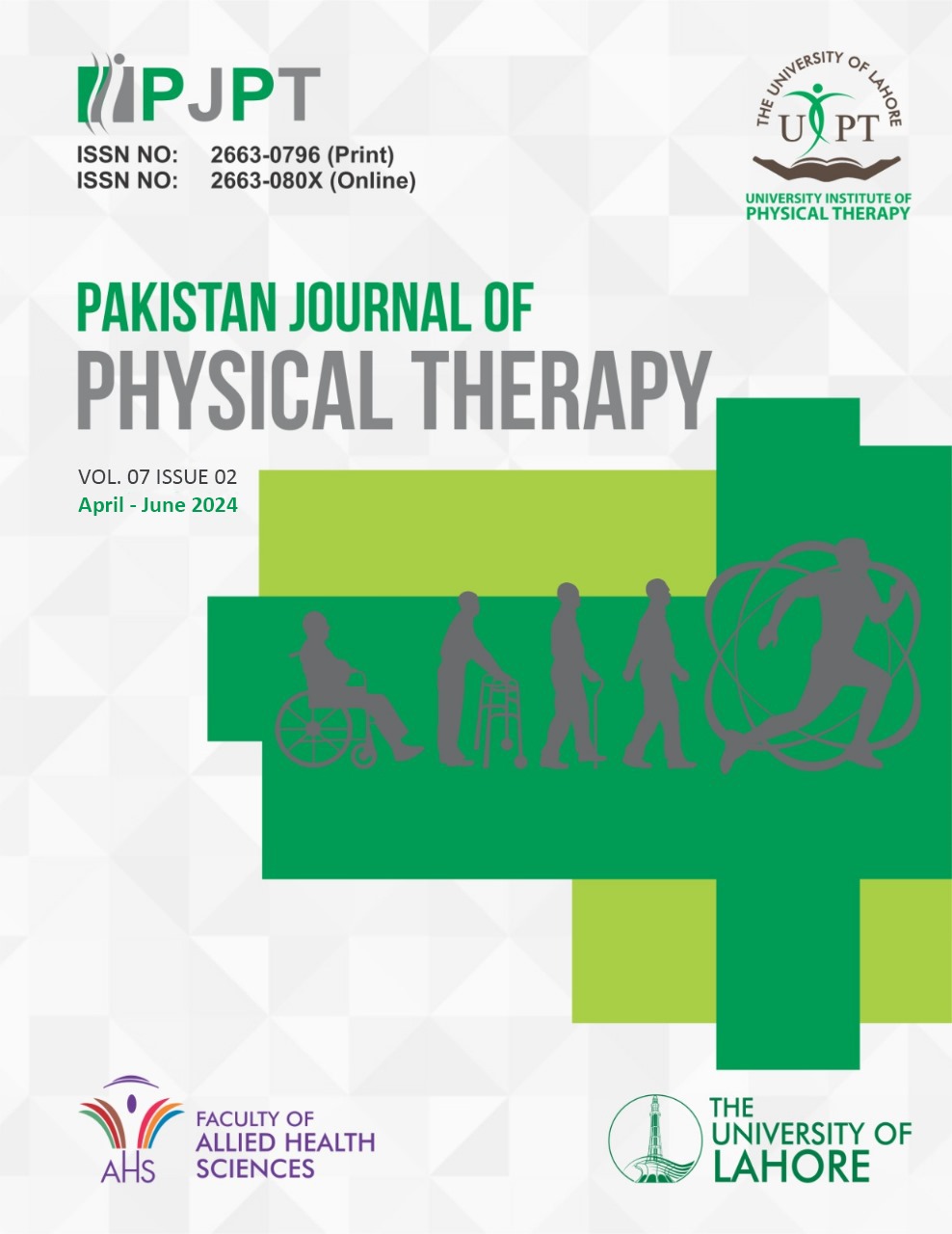COMPARISON OF SHOULDER BLADE MOBILIZATION COMBINED WITH GLENOHUMERAL JOINT MOBILIZATION VERSUS GLENOHUMERAL JOINT MOBILIZATION ALONE ON PAIN, DISABILITY AND QUALITY OF LIFE IN PATIENTS WITH FROZEN SHOULDER
Abstract
The onset of shoulder pain without a known etiology identifies an idiopathic condition known as frozen shoulder. It is a long-term condition characterized by pain, muscle weakness, and limited scope for movement. Objectives: The purpose of this study was to look at the impact of mobilization of the scapula together with glenohumeral mobilization as compared to glenohumeral mobilization only on shoulder pain, shoulder-related disability, and overall quality of life in individuals with the condition of adhesive capsulitis. Methods: In this quasi-experimental study, we purposively sampled frozen shoulder patients from the physiotherapy department of public hospitals in Faisalabad, adhering to the inclusion and exclusion parameters. Thirty individuals with this condition were separated into two distinct groups. For four weeks, one group received both scapula and glenohumeral joint mobilization, while group 2 only received glenohumeral mobilization. Results: Both groups showed improvement, with statistically significant findings (p<0.01). The study compared the effects of two interventions: shoulder blade and glenohumeral joint mobilization in group 1 and glenohumeral joint mobilization alone in group 2. Group 1 patients showed statistically significant results (p≤ 0.05), indicating that group 1 intervention was more successful than group 2 treatment. Conclusion: Both techniques showed improvement in pain, discomfort and overall health-related quality of life in patients with adhesive capsulitis. However, shoulder blade mobilization in conjunction with glenohumeral joint mobilization proved more efficient.
Keywords: Adhesive capsulitis, Frozen shoulder, Glenoid mobilization, NPRS, Pain, Quality of life, Scapular mobilization, SPADI
Additional Files
Published
How to Cite
Issue
Section
License
Copyright (c) 2024 Pakistan Journal of Physical Therapy (PJPT)

This work is licensed under a Creative Commons Attribution 4.0 International License.



